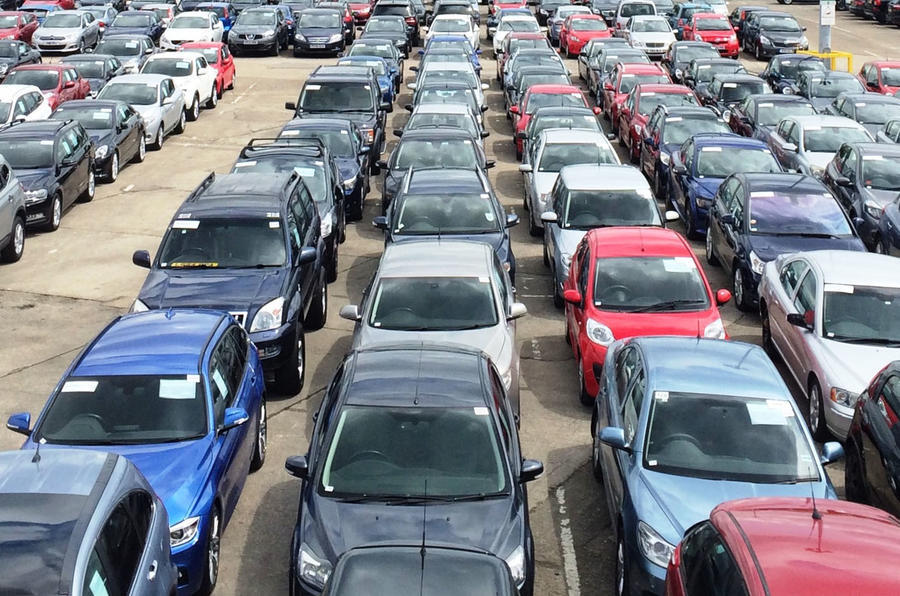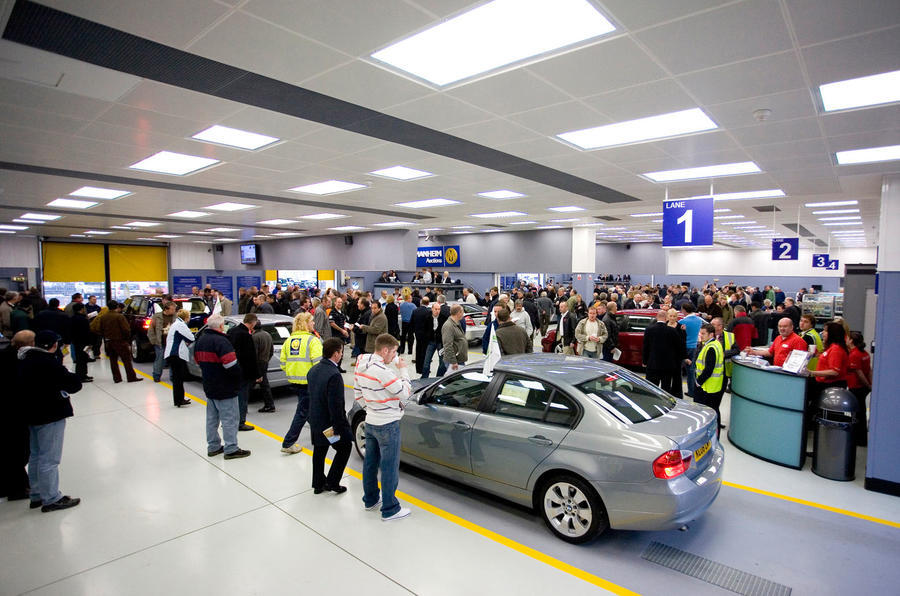Dealers continue to value physical used car auctions over online sales despite the rapid rise of the web marketplace.
While certain vehicles suit digital sales, traders still prefer to see other stock in the metal before they buy it, multiple auction companies told Autocar.
They add that in-person attendees also bid on vehicles they may not have when buying remotely.
“You can’t beat a physical auction. It allows us to get to know buyers and we can adopt our selling approach accordingly,” said Nick Thompson, director of sales at Aston Barclay.
The firm says it sells around 35-40% of vehicles online, while 60-65% are scooped up by those in the hall, but such figures can vary wildly.
Fellow trader BCA, for example, ditched physical sales at the pandemic’s onset in March 2020, while most other auctioneers went through a digital-only spell then returned to a hybrid format when conditions allowed.
Online, however, is the norm for closed OEM sales to franchised dealers sourcing younger stock. “OEMs really do favour pure online, because it is a fairly fresh product and, nine times out of 10, fairly good condition,” said Philip Nothard, insight director at Cox Automotive, a firm that runs an average of 35 auctions a week under its Manheim brand.

READ MORE: Car auctions: the complete guide to buying a car at auction
“Nearly new, fleet and OEM stock work well online… Generally, online buyers will bid on the younger Nama grade one and two vehicles or bid on a very specific car or van for a customer,” added Thompson.
The same cannot be said of older cars, commercials or anything where condition is questionable.
“Commercial vehicles really do support physical auctions,” explained Nothard. “They are the smaller dealers – the one-man bands – and they want to get to that vehicle to check its condition.”
“Generally, we sell the older vehicles – those with damage or with a limited service history – via this [physical] route,” said Zoe Sutton, sales director at Motor Auction Group, which runs around six online and four physical auctions a week, and claims to sell three times as many vehicles physically. “Dealer part exchanges, voluntary terminations, repossessions and some rental stock, meanwhile, tend to get sold physically… simply because of their age, mileage, condition and lower price point.”
The shortage of used vehicles and glut of fleet contract extensions has led to an inevitable increase in the average age and mileage of those now going under the hammer.
“The average mileage for cars sold physically and virtually at Manheim was 65,000 in the first half of 2019,” said Nothard. “In the first half of this year, it was just over 72,000 – that’s an 8000-mile/11% increase.
“The average age has gone from 85 months to 106 months – a 25% increase. Some of that is because the retailers are keeping more… higher-mileage, older vehicles for retail and not sending them to auction. You’ve also got contract extensions; the average age of a Motability car is now four years rather than three.”

Dealers were also keen to personally visit auction halls after months of cooped-up remote bidding. “We were one of the first to drive vehicles through the halls again [after lockdown],” said Alex Wright, managing director of Shoreham Vehicle Auctions, which runs three sales a week physically and online. “Buyers wanted to come back in, not only to inspect vehicles before bidding, but also to discuss the market with their buyer friends.”
He conceded that the pandemic fuelled a trend in digital sales, which has been sustained by ongoing stock shortages: “We have also seen more national buyers buying online since Covid due to the shortages of certain types of stock. It provides for a more competitive marketplace when online and buyers are bidding together.”
Physical sales also allow buyers to bid opportunistically, which they are unlikely to do online. Nothard said dealers home in on stock with limited criteria when they shop digitally, which can unintentionally blinker them to worthwhile vehicles outside their usual scope.
He said: “We have seen a continual increase in physical attendance and physical conversions since the pandemic… Because of the shortage of vehicles, the retailers see the benefit of going to a physical auction, because they might see something they wouldn’t have when searching online. In the virtual space, they are searching selective criteria – average age and mileage, based on a portfolio – whereas in a physical environment, they could be sat there waiting for their lot numbers to come up, but they say: ‘You know what? That car looks nice, and it’s not a lot of money. I’ll have a go.’”
Nothard added that buyers simultaneously attend physical sales and bid remotely on others, which is said to give them the buzz from the hall along with the breadth of online stock.
“As soon as there is an online presence, you can hit multiple sales in multiple locations very efficiently,” he said. “Just because they are physically in that auction, doesn’t mean they are not necessarily buying virtually somewhere else on their iPad.”






Join the debate
Add your comment
Twenty years ago the only fee to purchase at auction was a nominal insurance indemnity but now you get ripped off with one hell of a percentage, for just a few transactions and not worthwhile doing now